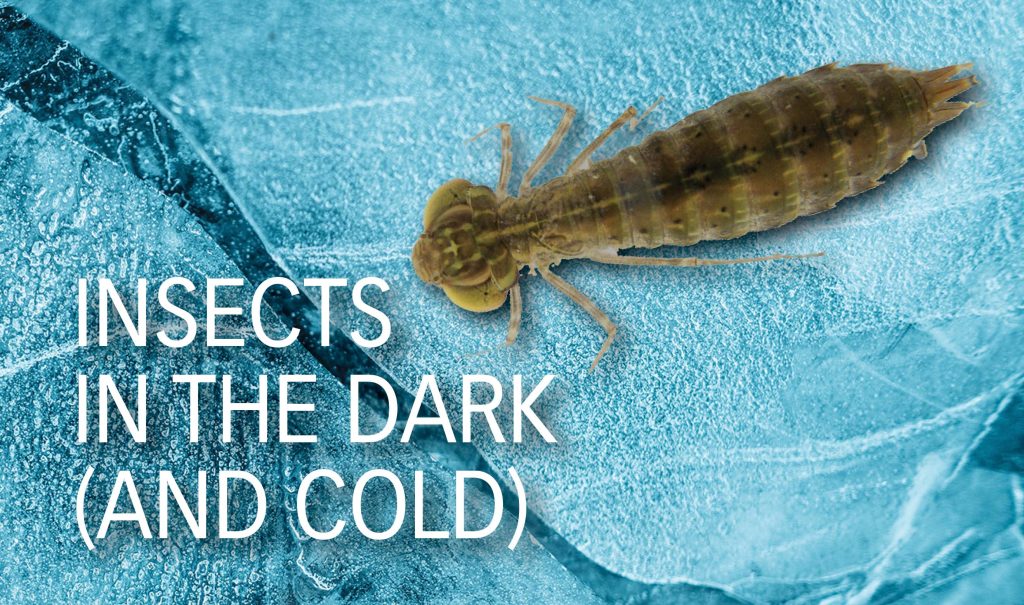
Seems like insects have as many strategies as humans do for making it through the cold and dark of winter. Surprisingly, different species do it in different life stages.
Praying mantids winter as eggs, as do some mosquitos. A more common method is employed by cutworms, which as larvae burrow into leaf litter or soil, or even replace the water in their bodies with glycerol (a type of alcohol) which has a lower freezing point. Alerted by shorter days, some fly larvae inhabit galls on tree leaves. Corn borers can withstand temperatures down to -40 degrees F. by balling up inside corn stalks or cobs.
Dragonflies hang out as nymphs under water, even under ice, actively feeding. Less active insects (the majority) reduce their metabolic rate to a level high enough to keep them alive but not to move or produce growth, which is called diapause. Silkworms build cocoons to overwinter as pupae.
Monarch butterflies migrate annually as adults to warmer climes, which requires about four generations for the round trip. Adult bees cluster in the hive, eat honey, and fan the air around the queen to stay warm. As temperatures have begun to stay warmer in autumn, bees are sometimes fooled into thinking that spring has begun. When this happens, the queen swarms to begin a new hive just as colder temperatures arrive and kill the flowers that would provide food for a large population with no stored honey.
We were invaded by little Aedes mosquitoes this summer, but will they survive our winter and be around next year? We know they are cold-blooded, and if the temperature is less than 50 degrees F. they become less active. They may hibernate in holes or lay eggs in cold water that then hatch when the water warms. Spraying is an inefficient way of controlling them and a danger to other insects such as bees and lady bugs. (Read more on mosquito control in the upcoming May 2023 Issue of the Mid Rio Grande Times.)
And finally, some insects make their homes around the equator, where temperatures are consistently warm enough to grow and reproduce year-round without having to adapt to winter. Or they hang out on warm-blooded animals like us…think bedbugs, fleas, and lice. Ick!
By Donna Detweiler
What is your favorite strategy for enduring – or even enjoying – winter? Are you a snowbird, or do you prefer to hole up in a cocoon of quilts and eat honey? Maybe we can learn new tricks from our insect neighbors.


